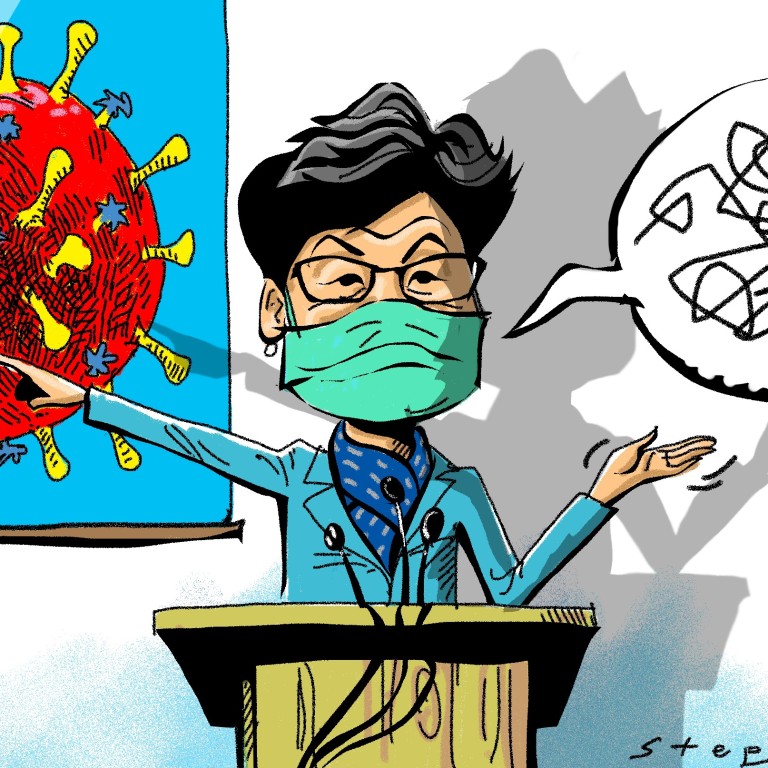While standard operating procedures provide useful guidance, sticking too rigidly to the book sometimes backfires. During
Australia’s bush fire crisis, the federal government initially refused to take an active role, arguing that fighting bush fires is a state responsibility. For that, Prime Minister Scott Morrison’s leadership was
widely questioned.
More stringent rules and elaborate mechanisms may have been instituted, but what if they are not strictly followed? The main reason Covid-19 was not stopped “at source” in Wuhan was the underassessment, underreporting and suppression of information for over a month due to
systemic failures.
In 2003, both government-appointed international experts and the Hospital Authority’s review found
serious defects in Hong Kong’s crisis management over Sars. The viral spread and impact were underestimated because the traditional evidence-based epidemiological assessment approach ignored “soft” intelligence.
Underestimating risk and trying too hard to contain a public scare at that time led to delayed decisions on community infection control, school closures and quarantine measures. The absence of contingency planning, poor inter-agency coordination, unclear chain of command, and unsatisfactory resource and supplies support contributed to confusion and hindered effective implementation of infection control.
Public panic and discontent escalated due to the lack of accurate and timely information, poor communication and weak coordination. There was insufficient capacity, and staff were not fully prepared, to deal with a surge in public hospitals and public health services, even though the
professional dedication displayed by medical and nursing staff was unparalleled. An epidemic crisis eventually evolved into a larger crisis of public confidence and governance.
The government had since rolled out new regulations, enhanced preparedness and response plans, with strengthened precautionary mechanisms.
When
swine flu (H1N1) broke out in 2009, officials swiftly went into action, raising alertness to the highest emergency level. Surveillance at border control points and quarantine measures were tightened up (including quarantining a whole hotel), with schools and kindergartens closed. Such a speedy, well-coordinated and full-scale crisis response was applauded by the community.
The government was
sufficiently alert to the potential risk when a pneumonia of unknown cause was first reported in Wuhan last December. Local experts issued warnings even before mainland authorities revealed its seriousness. In early January, the unknown virus was added to the list of notifiable diseases.
The first cases of local infection were confirmed on January 23 and the emergency response was activated two days later. The mobilisation of the public health and hospital systems, coordination of interdepartmental responses, information dissemination,
quarantine requirements,
school closures and efforts to reduce close contact in public spaces have all benefited from the Sars and swine flu experiences.
Expert advice plays an important part, though medical experts do not always agree fully on risk assessment and response, whether locally or internationally. Ultimately, it falls on the government to make the call.
There has been vocal dissatisfaction about some arrangements, such as the location of
quarantine facilities. Then there has been panic-
buying of sanitary products and some daily necessities, first jeered as Hong Kong craziness but which have proved to be a universal reaction (in Japan and Australia, among other places). Such panic could have been moderated by stronger public reassurance and intervention supported by evidence-based explanations.
Despite grievances from medical and nursing staff about frontline problems, tight supply of protective equipment and short-lived
industrial action, Hong Kong has, by and large, produced a scorecard not inferior to Singapore and arguably better than
Japan and
South Korea. Professional competence and dedication again stand out. Post-Sars standard operating procedures work.
In crisis management, decisions often have to be made and actions taken amid uncertainties and unknowns within a limited time and public tolerance span. Hence, communication and leadership are crucial to maintain public confidence. Yet the government’s voice is weak because of
low public trust and the ongoing
political unrest.
It was insufficiently prepared for the scale of the new epidemic’s impact in terms of strategic supplies and public reaction. After experts emphasised the wearing of masks and changing them at least daily, their
acute shortage precipitated panic and anger. People are desperate to know what to do to reduce risk when more satisfactory conditions are unavailable.
In any health crisis, a variety of expert and public views abounds, not to mention biased observations and misinformation on social media. Scattered information is not enough; focused and practical messaging is key.
The government should articulate a clear crisis narrative, telling people what risks (real and potential) they are facing, how serious the situation is, its strategies and remedial actions, constraints and hurdles, and the likely and possible consequences. This would help the public understand risk in a more precise and less imagined context. It can also impress upon them that things are in safe hands.
The question of whether to
close the border should have been more fully debated to alleviate public anxiety. Epidemiological experts are right to insist on tighter border controls, although a full closure is not feasible. Most advocates of closure did not demand banning Hong Kong residents returning from the mainland, and targeted only mainlanders but not mainland goods.
Entry restrictions imposed by various affected countries differ, after balancing multiple imperatives, risks, costs and benefits. Response strategies in some nations are very stringent while others are rather laid back. Mainland China’s
city lockdowns and Italy’s latest
regional quarantine measures restricting travelling in and out are the most draconian so far.
For now, global attention is focused on containing the virus. The ripple effects on the economy and other aspects of daily life have yet to fully unfold. The battle against the epidemic is far from over.
Anthony Cheung is research chair professor of public administration at the Education University of Hong Kong and a former secretary for transport and housing (2012-17)


